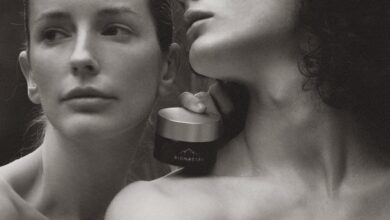Almost anybody can take photographs. However, capturing the perfect shot is a different ball game entirely. Are you a budding photographer looking for how to shoot great pictures? Or maybe you want to capture images that are Instagram worthy because, as they say, if you don’t post it, did it even happen?
Whichever category you fall into, here you will find tips on how to get the perfect shot and also improve your photography skills in general.
01 Find the Perfect Location
You want a great picture, then find an ideal location. Understandably, not all your photos are going to be preplanned. However, if you can, it is advisable to look for the perfect place before a photoshoot. Also, note that different shoots will need a fitting location, so make sure you have a couple of them at hand at any time.
Your location is a vital part of the whole shooting process, so it is good to get familiar with the surroundings if you want to get the perfect shot. Look for spots from where you can shoot different angles and also visualize the environment to see if it fits your photoshoot needs.
02 Get the Right Angle
Getting your angles right can make all the difference when taking the perfect shot. It would be best if you decided on the angle that will best fit the image you are trying to capture. In other words, focus on shooting their best side. If you are not sure of the angle to shoot from, you can first try different ones and then choose the best one.
A common mistake is just to direct the camera at the subject and then capture. Although there is nothing overtly wrong with the method, however, it could prevent you from getting a genuinely innovative picture.
So, make sure you explore and test different angles, from the sides, above, low whichever is possible. You never can tell; you might end up with one of the best shots ever.
03 Proper Lighting
Lighting is significant if you’re going to achieve your photo shoot goals. Make sure that the lighting is directed at your subject when shooting; this way, attention is drawn to the subject.
There are two types of lighting you can use when taking a photograph. You can use either the studio light or the natural light. However, it is better to rely on natural lighting, especially if it is an outdoor shoot.
Also, keep in mind that although sunlight might be good in some scenarios, too much direct sunlight might ruin your efforts. The best time to take photos is early in the morning or late afternoon/ evening, this will ensure you get the best lighting for outdoor photography
If you are shooting inside, it is best to use a studio or ring light. They can provide the much-needed lighting required for indoor photoshoots.
You might also need to consider the type of image you are capturing to get the best lighting. For instance, it might be that you need the sun to hit a particular spot before it can be captured, in such cases, you will have to plan, study the subject and time the appropriate moment to take the shot.
04 Study Your Camera
It goes without saying that cameras are not the same. The quickest way to know how best to handle your camera is by reading the manual and studying the camera. Read up all that your camera does, and explore them on your own, choose your settings, before using it for a professional shoot.
Admittedly using a camera for the first time can be difficult. However, once you study and get used to it, it becomes a part of you, then you can get down to creating magic together.
05 Always Be Ready
Inspiration can come at unexpected times and places, so what do you do when you don’t have your camera with you? It is why it is advisable always to have your camera on your person, even if it is just a smartphone camera.
As long as you always have one, you can be spontaneous, act when you are inspired, and get some of the best shots along the way.
06 Keep Things Simple
Simplicity is one of the features of great photography, so at all costs, avoid cluttering your image. It just ends up too crowded, unorganized, and drawing attention away from your subject.
You will want your subject to be the focus of your audience, so keep it simple and only add details where and when necessary.
Another area where you have to keep things simple is editing. Editing is an essential part of photographing, but make sure you don’t overdo it. What you want is to make your image look better while still looking natural. You won’t want to end up with something that is too fake or cartoonish.
To help your editing skills, you can use some photo editing apps to improve the look of the final product.
07 Proper Implementation of Watermark
Watermarking your images is a good idea; after all, it brands your work, but except you are a professional photographer, it might not be necessary at all. When it is not applied correctly, watermarks can negatively affect the look of your photographs, thereby ruining your efforts to record the perfect shot.
If you must use a watermark, it is better to keep it tiny.
08 Practice and Experiment
Like all art forms, photography requires training to become perfect. So, if you are just starting, don’t be too much in haste, practice, make mistakes, explore your spontaneity and experiment; the more you practice, the more create your style.
Even if you are an expert, don’t get too frustrated when you don’t get the perfect shot on the first trial. Instead, be patient and take more. If you continue with it, you will eventually find some that are picture-perfect.
Conclusion
Getting the perfect shot can be tricky, but not at all impossible. Be patient and relaxed and remember to follow the outlined tips when practicing, before you know it, you will discover that your pictures are beginning to have that wow appeal.




